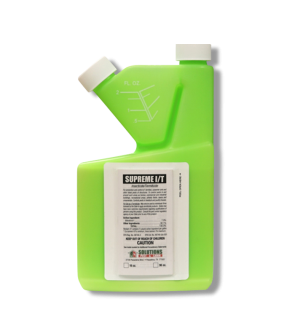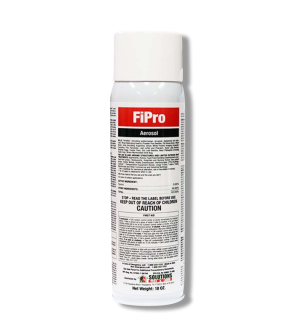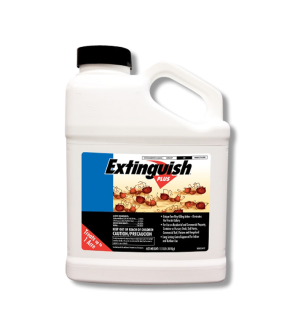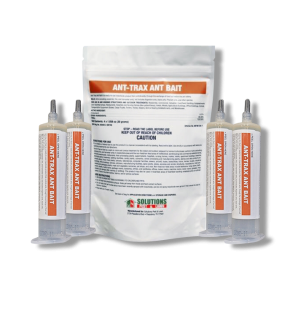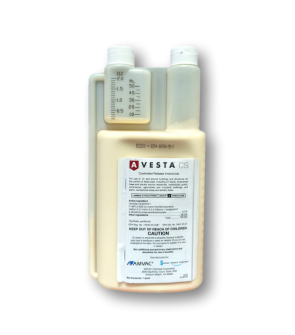Gain access to personalized product screening, the best pricing, rewards, and more!
Most Effective Products
Asian Needle Ant Control: How To Get Rid of Asian Needle Ants
This page is an Asian Needle Ant control guide. By using the suggested products and methods, you will control Asian Needle Ants. Follow this guide and use the recommended products, and we guarantee 100% control of Asian Needle Ants.
Asian Needle Ants are invasive ants that behave like bullies due to their aggressive tendencies. While native ants are vital in keeping the ecosystem running efficiently, Asian Needle Ants can invade and drive native ant species away to establish dominance.
Asian Needle Ants thrive in residential areas and the wilderness. They usually enter homes in search of food and damp areas to hang out.
Because of their aggressive nature, Asian Needle Ants can also venture onto lawns and gardens and drive out ladybugs, caterpillars, and even bees that benefit gardens and encourage pollination.
Asian Needle Ants are dangerous to humans because their stingers are venomous. Their sting can cause severe allergic reactions in some people. The Asian needle ant has a knack for quickly producing a population that can infest a home to the point where it becomes challenging to control.
If your property has been plagued by Asian Needle Ants, our DIY guide below will explain how to control this problem pest using our professional-grade products and expert techniques.
Identification

Before treating it, you need to ensure you're dealing with Asian Needle Ants and not another type of species. Misidentification can lead to using the wrong treatment products, wasting time and money. Here are some distinguishing characteristics of Asian Needle Ants so you know what the ant looks like:
- The Asian needle ant can be small or medium-sized, with workers and queens measuring between 5.0 and 6.5 mm (1/5 of an inch) in length.
- Workers and queen Asian Needle Ants have very similar resemblances. Their bodies are relatively long and slender, colored dark brown or black, and they have legs and mandibles between a light brown and slightly orange hue.
- A trait that makes Asian Needle Ants stand out is how they cannot crawl up smooth surfaces, such as glass. For example, if you take an Asian Needle Ant and place them in a glass container, the Asian needle ant will try and repeatedly fail to escape and resign themselves to the base of the container.
Use the image and description above to help you correctly identify Asian Needle Ants on your property. If you are unsure, you can contact us with a high-quality closeup photo of the ant, and we will try to identify the species for you.
Inspection

After you have confirmed that you are dealing with Asian Needle Ants, you can proceed with an inspection. During the inspection, you will focus on finding these "hotspots" where ant trails are formed and, possibly, where their nest or colony is located.
Where To Inspect
Outdoors, search your yard, yard debris, leaf litter (especially pine needle leaf litter), woodpiles, near gardens and flower beds, around trees (or inside hollowed trees), under rocks, logs, and bricks, close to the pavement, driveways, and near garbage cans.
Indoors, look in cracks and crevices near kitchens, bathrooms, basements, and attics. Search under sinks, close to moisture, under appliances, near pipes, and near potted plants.
What To Look For
You're looking for Asian Needle Ant trails and their nests or colonies. Search indoors and outdoors for their foraging trails and follow them back to the source. Often, this can lead you directly to the colony.
If you can't find any trails, consider using a bait (like peanut butter) and following the trails they create to the bait. Once you have discovered their foraging trails or the nests or colonies, you will apply the treatment there.
Treatment
Once you have confirmed Asian Needle ant activity, it is time to begin treatment. Remember to read all product labels, follow the application instructions on these labels, and wear personal protective equipment (PPE) to stay safe.
Depending on the severity of the infestation, you will need to conduct indoor and outdoor insecticide applications. We recommend applying an outdoor treatment of Supreme IT Insecticide and indoors using a combination of Ant-Trax Ant Bait and Fipro Foaming Aerosol.
Step 1: Perimeter Treatment with Supreme IT Insecticide
Supreme IT is a powerful insecticide that kills over 75 insect pests, including ants, and also serves as a repellent. You will use this product as a perimeter treatment to treat ants that might be coming inside your property from the yard and also directly on ant mounds that you have found in the yard. This product has residual (or long-term effects) that will keep working for up to 90 days.
To do the perimeter treatment, mix 1 ounce of Supreme IT with a gallon of water inside a pump sprayer. This application rate will treat 1,000 square feet.
Create a barrier by spraying 3 feet up and 3 feet out from the foundation of your structure. Make sure to target window frames, door frames, eaves, soffits, rain gutters, garage doors, electrical/plumbing penetrations, and any cracks and crevices where ants might enter.
If you have found a colony or nest, you will treat it with a drench. First, spray all around the colony's opening (at the base) to target any ants that try to escape after you apply treatment to the opening.
Next, open the cap of your pump sprayer and pour the finished Supreme IT solution directly into the colony's opening until it is completely drenched.
Do not let people or pets enter areas treated until the spray has dried.
Step 2: Indoor Baiting with Ant-Trax Ant Bait
Ant-Trax is an attractive ant bait product with a convenient syringe that is easy to apply. Ants cannot resist the formula and will take the bait back to their nest to share with the colony, eventually exposing the whole population to the poison.
Ant-Trax is easy to use. It comes with an application syringe, and you simply squeeze the plunger down to apply it. In areas of high activity, apply at the rate of a pea-sized drop and separate each placement by one foot.
Apply near window frames, door frames, where moisture accumulates, under appliances, and close to food sources where Asian Needle Ant activity is the highest.
Step 3: Treat Cracks and Crevices with Fipro Aerosol
Fipro is a foaming aerosol containing the lethal active ingredient Fipronil. It kills Asian Needle Ants quickly, and the foaming capabilities allow the insecticide to reach the ants in the tightest of hiding spots.
To use, attach the red straw applicator tip to the nozzle and spray in cracks and crevices where you have seen ant activity. Apply under sinks, window frames, door frames, and other cracks and crevices where you have noticed them, and they will die shortly after that.
Do not try to kill the ants or clean the areas (using cleaning supplies) where you have applied Fipro and Ant-Trax. Let the ants come into contact with the products to bring the pesticides back to the nest.
Prevention
After applying treatment products and controlling Asian Needle Ants, you will need to implement preventative measures to ensure they don't come back.
- Maintain a regular cleaning schedule and clean up any spills, crumbs, or food supplies for the ants. Reduce yard debris by cleaning up leaf litter, stones, brocks, logs, woodpiles, and general clutter from your yard; this will eliminate their hiding spots.
- Trim back vegetation from your property (including overhanging branches that touch the roof of your structure) to prevent Ants from coming close to it. Do your best to reduce moisture issues around your home and fix leaky faucets or plumbing that create standing water in your yard.
- Eliminate entry points into your home by sealing cracks and crevices with caulking or sealant.
- Finally, use Supreme IT every 90 days around the perimeter of your property to maintain the insecticidal barrier around your home.
Key Takeaways
What are Asian Needle Ants?
- Asian Needle Ants are a stubborn and persistent ant species known for dominating lawns and gardens with their aggressive behavior and entering homes in large numbers.
How to Get Rid of Asian Needle Ants
- To eliminate Asian Needle Ants, you will need a multifaceted treatment approach that includes indoor treatments of Fipro Aerosol and Ant-Trax Ant Bait and outdoor perimeter treatments of Supreme IT Insecticide.
Preventing Asian Needle Ant Reinfestation
- To prevent future infestations, you will need to modify your environment. This means creating exclusion measures like sealing cracks and crevices and making your yard less appealing to ants by cleaning up yard debris. You should also perform routine preventative treatments of Supreme IT.











